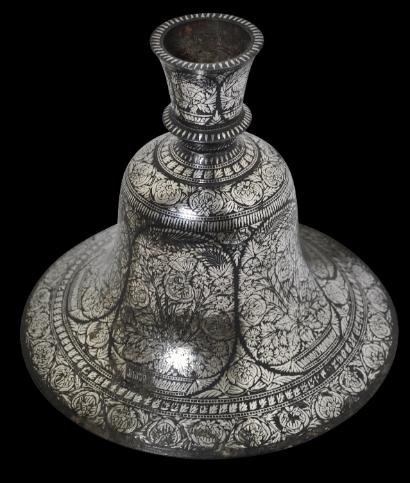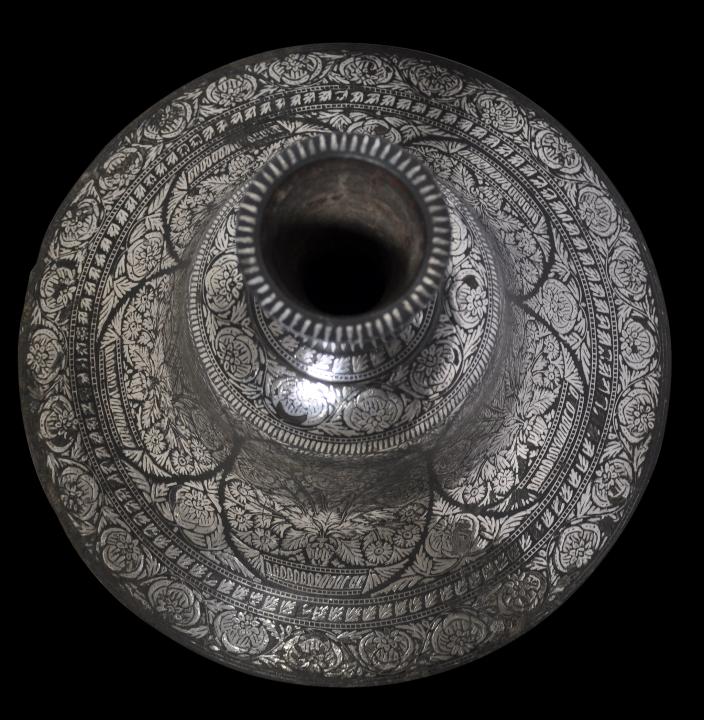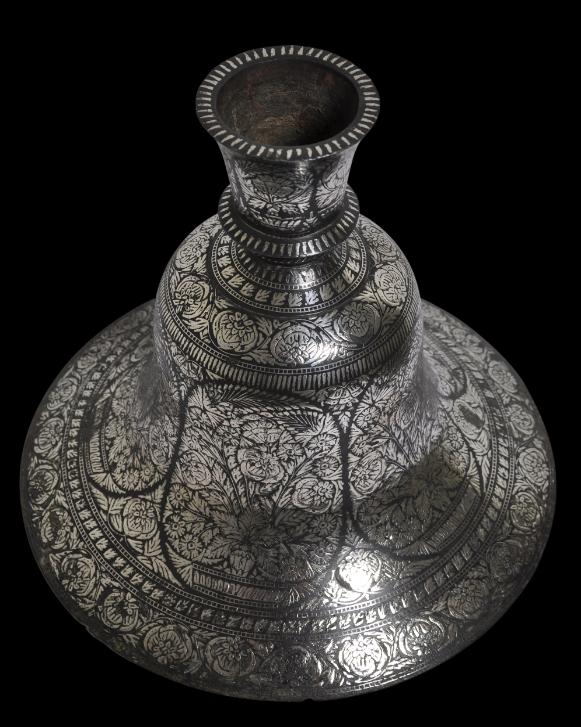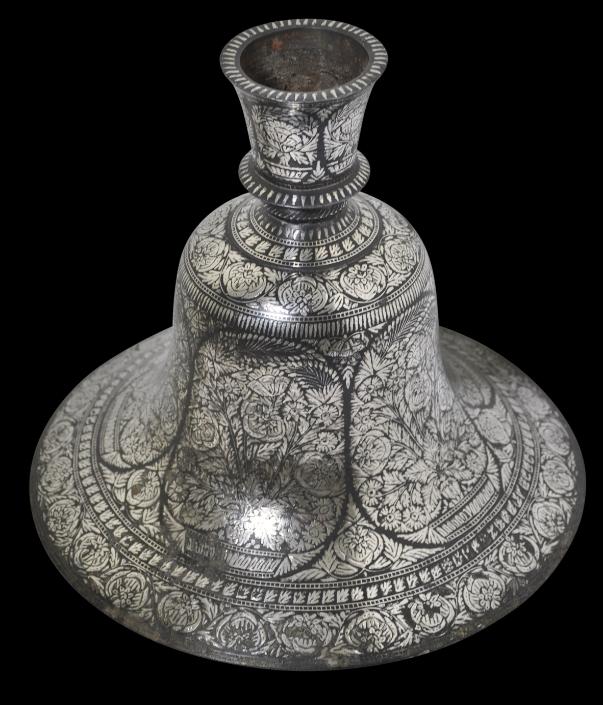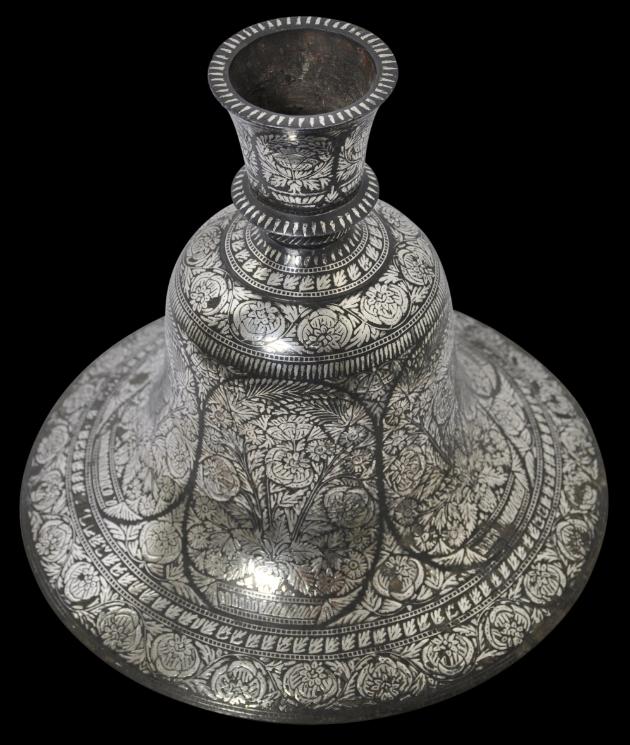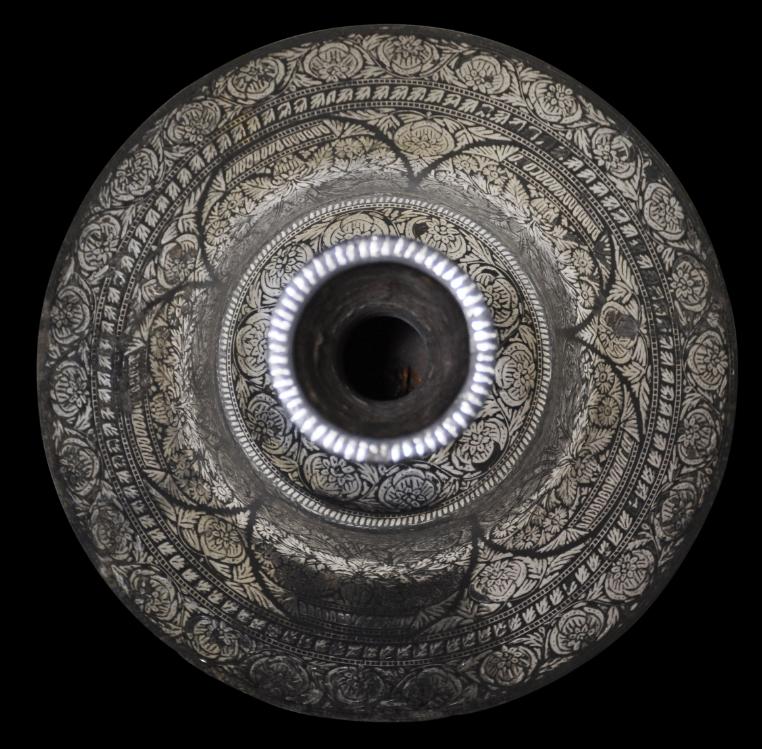Bidri Bidriware Hookah Base, India, Bidar
Large Bell-shaped Silver-Inlaid Bidri Hookah Base
Bidar, Deccan, India
19th century
height: 20.2cm, diameter of base: 24.1cm, weight: 3.424kg
This relatively large hookah base of bell form is decorated in silver (minor losses) with the poppy motif often encountered in bidriware from Bidar. The poppies sprout from stylised vases that rest on trays within oval cartouches within typical floral border designs. (Stronge [1985 p. 63] shows a bidriware ewer that features the typical Bidar poppy motif but with the poppies emitting from a vase on a tray.)
The base widens to become unusually particularly broad and flat.
Bidriware originated in the city of Bidar in the Deccan. It is cast from an alloy of mostly zinc with copper, tin and lead. The vessels are overlaid or inlaid with silver, brass and sometimes gold. A paste that contains sal ammoniac is then applied which turns the ally dark black but leaving the silver, brass and gold unaffected.
Bidriware caused great interest at the Great Exhibition in London in 1851. It found new European markets and helped to keep alive the craft as demand fell in India with the decline of many of the smaller courts and landed families.
References
Lal, K., Bidri Ware: National Museum Collection, National Museum New Delhi, 1990.
Stronge, S.,
Bidri Ware: Inlaid Metalwork from India, Victoria & Albert Museum, 1985.
Inventory no.: 754
SOLD
